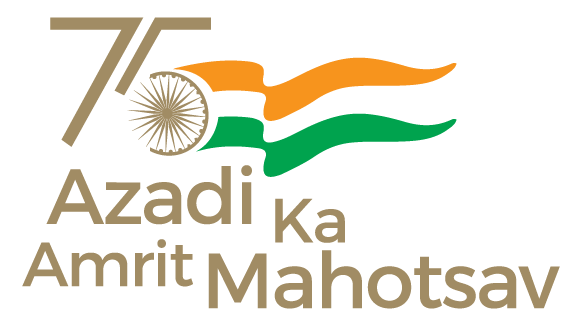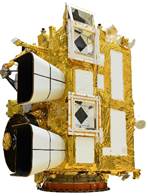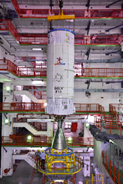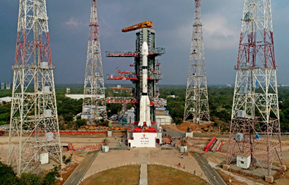
Satellite INSAT-3DS on launch vehicle GSLV-F14, fully funded by the Ministry of Earth Sciences (MoES), was successfully launched by the Indian Space Research Organisation (ISRO) from the Satish Dhawan Space Centre in Sriharikota, Andhra Pradesh, today at 1730 hrs.
INSAT-3DS will augment the country’s meteorological (weather, climate, and ocean related) services with the presently operational INSAT-3D and INSAT-3DR in-orbit satellites. The newly launched INSAT-3DS satellite aims to enhance the monitoring of Earth’s surface, atmosphere, oceans, and environment, elevate capabilities in data collection and dissemination and satellite-aided search and rescue services. The initiative will boost India’s weather, climate, and ocean-related observations and services, expanding knowledge and better disaster mitigation and preparedness in the future.
The 51.7-meter (m) tall and 4 m wide Geosynchronous Satellite Launch Vehicle (GSLV)-F14 placed the INSAT-3DS satellite into a geosynchronous transfer orbit, then to a geosynchronous stationary orbit in space. INSAT-3DS is configured around ISRO’s well-proven I-2k bus platform with a lift-off mass of 2,275 kilograms. It is equipped with state-of-the-art payloads: (i) an imager payload with a six-channel optical radiometer to generate images of the Earth and its environment; (ii) a 19-channel sounder payload to provide information on the atmosphere; communication payloads, namely (iii) a data relay transponder to receive meteorological, hydrological and oceanographic data from automatic data collection platforms, and (iv) a satellite aided search and rescue transponder that relays a distress signal or alert from beacon transmitters with global coverage. Indian Industries have significantly contributed to the making of the INSAT-3DS.
Meteorological data from the INSAT-3DS satellite shall be utilised by institutes of the Ministry of Earth Sciences (MoES), namely, India Meteorology Department (IMD), National Centre for Medium-Range Weather Forecasting (NCMRWF), Indian Institute of Tropical Meteorology (IITM), National Institute of Ocean Technology (NIOT), and Indian National Centre for Ocean Information Services (INCOIS) and various Indian agencies to enhance meteorological research and services. This will boost India’s weather and climate prediction and forecasts, timely alerts and early warnings, and advisories for public and last mile users such as fisherfolk and farmers.
Thanks to ISRO for launching INSAT-3DS, which has immense benefits to meteorological nowcast and forecasts services.



Pictures: Ministry of Earth Sciences (MoES)-funded INSAT-3DS satellite (left) on Geosynchronous Satellite Launch Vehicle (GSLV)-F14 (centre), which was launched on February 17, 2024, 1730 hrs from Sriharikota, Andhra Pradesh (right).
Technical details of the GSLV-F14/INSAT-3DS mission are made available by ISRO at https://www.isro.gov.in/media_isro/pdf/Missions/GSLVF14/GSLVF14-INSAT-3DS_Brochure_English.pdf. The launch was telecast live at https://www.isro.gov.in/GSLVF14_INSAT_3DS_Livestreaming.html.
*****
SNC/PK/PM



